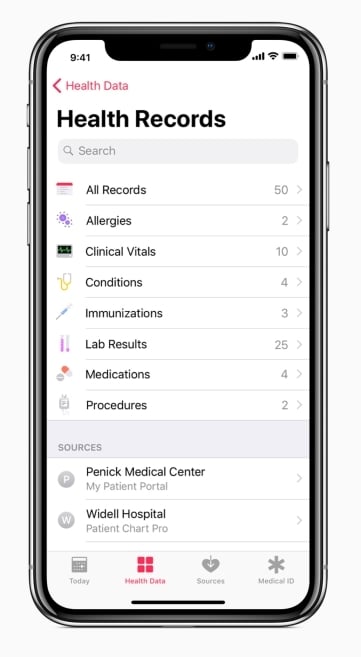Two months after the beta run, Apple has officially launched its Apple Health Records function, which allows users to access electronic health records from multiple healthcare providers in one place.
Now patients of 39 health systems covering hundreds of hospitals and clinics can view their EHR from all participating institutions aggregated together on their iPhone. It means patients and physicians can better view medical information in the healthcare setting, but it could also change the clinical trial landscape, according to Joe Dustin, principal, mobile health at Medidata Solutions.
EHRs have been used by the research community to identify clinical trial sites and potential participants, but they “have had a bad reputation in the technology industry as ‘the place good data goes to die,’” said Dustin.

Now, much more healthcare data will become exchangeable and machine-readable with the Fast Healthcare Interoperability Resources (FHIR) standards, which the iPhone app is based on. When data come together, it usually means more insights could be drawn. Dustin said Apple, as the first mainstream company to use FHIR, could create a follow-me effect.
“This will not only help funnel patients to clinical trials, but it will help qualify them based on data standards. If patients can download their data, they will share their data,” said Dustin.
He explained that sponsors can even go direct to the patient if data is voluntarily shared through new channels that circumvent the traditional recruitment methods. But he also said that physicians, or an institution a patient trusts, will still be the best place to become aware of clinical trials.
Besides using EHR to recruit patients, virtual trials that harness digital technology to carry out at least parts of a clinical trial at a participant's home or local physician's office, rather than at a trial site, could also become more popular. To Dustin, the new Apple feature can reduce the reliance on clinical trial sites drastically over the next few years, and “the uptick of health systems and community hospitals will become much more accessible due to the easier portability of health data.”
Although there might be gaps between data from EHR systems and those needed in research settings, Dustin said it would be nice that patients could come to clinical studies with portable eSource data as opposed to a paper document to populate study databases.
“As clinical trials become more virtual, sponsors will be able to ‘dial in’ what capabilities they want virtualized,” he said. “This new Apple feature will enable new capabilities that were not possible before.”